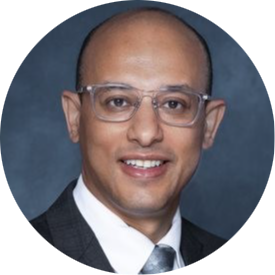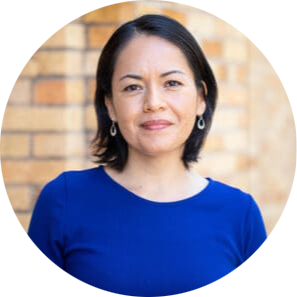
Dr. Jamie Reese is a physical therapist who has been practicing for 10 years. People are often confused about the physical therapist profession and what they can offer. This blog will help demystify physical therapy for you.
If you ask the interwebs or Wikipedia, you will be given this definition: “Physical therapy (PT), also known as physiotherapy, is a physical medicine and rehabilitation specialty that, by using mechanical force and movements, remediates impairments and promotes mobility, function, and quality of life through examination, diagnosis, prognosis, and physical intervention. It is performed by physical therapists (known as physiotherapists in many countries).” The origins of our techniques as medicine have been traced all the way back to 460 BC. Officially, Physical therapy became a profession in 1813 in Sweden. The profession really began to take hold in the United States in 1916 with the outbreak of Polio and later during WWI helping soldiers recover from injuries. This was the first time that a large scale effort of medicine was shifting from initial triage to recovery. From that, the profession of rehabilitation and musculoskeletal specialists emerged.
Physical therapy is often confused with many other professions. The professional credential is sometimes changed to describe forms of exercise. This can sometimes muddy the water on what is and is not “physical therapy”. Only licensed and credentialed physical therapists can provide “physical therapy”. Unfortunately, you might hear the term “physical therapy” used by personal trainers, chiropractors, yoga and Pilates instructors. What is really meant in those situations is “exercise”. Physical therapists are a separate entity entirely and provide very specific education, manual therapy, therapeutic exercise, and assessment to guide your rehabilitation process. 
Physical therapists undergo a tremendous amount of education. They must achieve a bachelor’s degree with specific Anatomy, Physiology, Kinesiology pre-requisites before even applying to PT school. It has been said for many years that PT school is more competitive than Medical school to gain entry. For example, and these numbers may not be exact, but approximately 400-500 applications of highly qualified students are screened down to <50 per admission year. Once in PT school, students are exposed to more anatomy and musculoskeletal assessment than any other profession, with the exception of orthopedic surgeons and specific anatomists. When students graduate, they have earned the degree Doctor of Physical Therapy.
After completion of the doctoral coursework, physical therapists must then sit for their licensure exam. A successful completion of this rigorous exam will permit the physical therapist to practice. Many physical therapists will then pursue advanced education and specialty certification through residency programs. These are typically an additional 1.5-2 years. Specialist physical therapists will then sit for a Board Exam which, if passed, will grant them the title of “Orthopedic Specialist”, or other specialty. Board Certified Specialists in Physical Therapy spend 9-10 years pursuing their education. It is important to make sure you are actually receiving “physical therapy” from a licensed “physical therapist”.
So what is it that we do for our patients?
Patients are typically referred to Physical Therapy from a physician. Once the referral is received you are set up for an initial evaluation. At this time, you will be able to discuss your concerns directly with the Doctor of Physical Therapy. We have the luxury of being able to spend a lot more time with you during this exam process than most other professions, and we love it. We get to know you as a person. We care about the things in your day that you are not able to do. Sometimes, we even help you realize how much you have been avoiding or unable to do as a result of an injury, pain, or even weakness. We conduct a thorough exam of the muscles, joints, and movement patterns that may have resulted in your limitations. Once we have identified some key areas to work on like strengthening, flexibility, and joint mobility, the physical therapist and you will then discuss the plan for rehabilitation. You will discuss your goals for returning to activity and your physical therapy rehabilitation plan will be designed specifically for you.
Some types of interventions that your physical therapist may choose to utilize may include manual therapy, therapeutic dry needling, joint manipulation or mobilization, therapeutic exercise, modalities including neuromuscular electrical stimulation, and neuromuscular re-education. Application of these interventions can vary quite a bit between providers, but know that it is always a conversation between you and your physical therapist about what is best for you.
How does working with a Physical Therapist help you if you have had Breast Cancer?
It is true that likely the last thing you may want to do is see another doctor for anything else. However, Doctors of Physical Therapy who have sub-specialties in working with oncology patients do exist and can tremendously enhance your ability to live a full life. There are many common side-effects that happen over the course of breast cancer treatment. These can include things that you may not even be aware of. Physical therapists play an integral role in helping to mitigate some of these side-effects.
See below for a checklist of the areas where physical therapy can help:
- Difficulty reaching overhead
- Fatigue
- Weakness
- Postural endurance
- Pain
- Scar restriction
- Swelling
- Improve response to radiation
- Reduce likelihood of developing lymphedema
Most importantly, it has been well researched and proven that returning to an active life-style is correlated with decreased re-occurrence rates, mortality rates, and overall quality of life. Doctors of physical therapy play an integral role in helping to return to the life you want.
Special thanks to:
Jamie Reese, PT, DPT, OCS
Clinic Director
Board Certified Orthopedic Specialist
Certified Lymphedema Therapist













